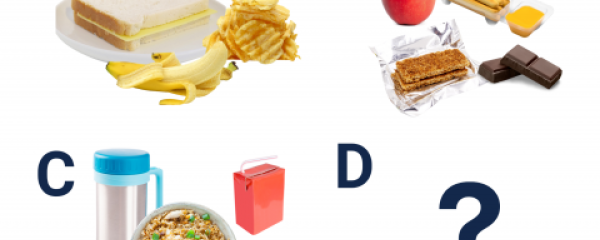What is it all about?
Students evaluate food advertising in social media targeted at youth to understand how food marketing techniques are designed to influence their food choices and eating behaviours. Students express their feelings and thoughts about advertising and apply their skills to respond to these influences.
Curriculum Connections
Grade 7
Health & Physical Education: A1.1, A1.3, A1.4, A1.5, A1.6, D3.1
Language - Media Literacy: 1.1, 1.2, 1.3, 1.4, 1.6, 2.1, 2.2, 3.1, 3.2, 3.3
Grade 8
Health & Physical Education: A1.1, A1.3, A1.5, A1.6, D2.1, D3.1
Language - Media Literacy: 1.1, 1.2, 1.3, 1.4, 1.6, 2.1, 2.2, 3.1, 3.2, 3.3
What may be needed?
Sample food and beverage advertisements from any online platform
How is it done?
- Show students food advertisements (ads) found on social media that are targeted to youth their age. Have students identify which social media platform that they think the ads would have appeared on and who they think the target audience is for the different ads. Have students identify some feelings and thoughts that the ads provoke for them.
- Youth are a popular group for food marketers to target, and therefore they receive a constant stream of information about food. Food advertisers use a variety of media to reach youth audiences, such as mass media (TV, radio, magazines, billboards) and digital media (websites, banner ads, smartphone ads, social media, video games, streaming apps).
- Ask students to think about and share some of the food ads they’ve encountered on social media, on streaming platforms, and/or in video games. Have students identify what types of foods or beverages were advertised and some of the food marketing techniques designed to get their attention.
- Use student responses to generate a list of food advertising techniques that may be used to appeal and influence youth and their food choices. Examples:
- Teens having fun together in various settings – concerts, parties, cottages
- Activities of interest – sports, video games, high-adventure recreational pursuits
- Other interests – fashion, music, dance
- Celebrity endorsements – animated or real
- Using language that appeals to youth
- Using colours to create a sense of excitement or adventure
- Using popular music that accentuates the message and/or grabs the viewer’s attention
- Ask students how they can determine whether the claims being made in food ads are true (e.g., trust in the brand, believing the integrity of the celebrity endorsing the product, trying it out, researching and reading the product information and nutrition labels).
- Provide guidance and have students select a food ad that they would like to analyze from a social media platform they use. Have students identify the food marketing techniques used, any claims being made about the product, and the messages the ad conveys. Have students review the product ingredients and nutritional labels to determine whether the claims being made are accurate. Have students identify information that is not provided to the consumer but should be in order for them to make informed choices. Have students share their analyses with the class.
- Using a think, pair, share strategy, have students explain what they think a “digital footprint” is and how they think food advertisers use digital footprints to target food ads to people their age (e.g., what they click on, search, like, share, and/or follow when they’re online).
- Facilitate a large group discussion. Have students reflect on the food ads they see and how they behave and act in response to the ads. Use question prompts to facilitate the discussion. Sample prompts:
- “Think about the type of food ads you regularly see on social media. To what degree do you think your digital footprint contributes to the type of food ads you encounter?”
- “How do you decide whether to “like” or share food ads on social media?”
- “How do you think your online actions contribute to creating food trends and building the product brand to influence others?”
- “Does liking or sharing the food ads mean you agree with the message and would use the product?”
- “When would you not like or share a food ad and why?”
- Conclude the discussion by reminding students that the more they are aware of food advertising techniques and how marketers use their digital footprints to target them, the better they can make informed, healthier food choices that contribute to developing healthier eating patterns.
- Provide students with scenarios for them to apply their critical thinking skills to respond to these influences.
Sample scenario:
A pop-up ad has come up on your social media feed for an energy sports drink that claims to make you faster and stronger and keeps you energized. It is asking you to “like the post and comment.” Make a list of constructive questions you would ask in the comments section of the post to learn more about the product in order to make an informed decision about whether the product is a healthier choice for you, and to decide if you will like and/or share the post.
Opportunities for Assessment
- Use the class-generated list of food marketing techniques they encounter on social media to assess students’ understanding of food marketing techniques used to target youth their age.
- Use students’ analysis of their chosen food ad to assess their understanding of food marketing techniques designed to influence their food choices.
- Use students’ responses to the scenario to assess students’ application of communication skills for recognizing and responding to food ads.
Ideas for Extension
- Have students create advocacy messages about responsible food advertising that they can post in a comment section anytime they are targeted by a food marketer. The messages should be created to either support or denounce the ad, depending on their individual stance about the product being advertised.
- Have students create an ad for social media using a format of their choice (e.g., animation, video, picture) that educates others about food marketing techniques and promotes healthier eating behaviours.
Educator Notes
- Students bring their learning home to their families, and they have variable amounts of control over the food they eat at home and the food they bring to school. Consult Creating a Safe and Inclusive Learning Environment for tips for talking about healthy food choices.
- Consult Additional Resources for more information about marketing techniques and their influences on people’s food choices.
- Consider accessing Canada’s Food Guide for more information about benefits of being aware of food marketing and how to be aware of food marketing when making food choices.



